In an inspirational move towards seabird protection, concerned advocates pledge to work together to monitor and protect the seabirds and natural heritage of the Grenadine Islands. Will Mackin and colleagues share their journey in forming the Grenadines Seabird Team.
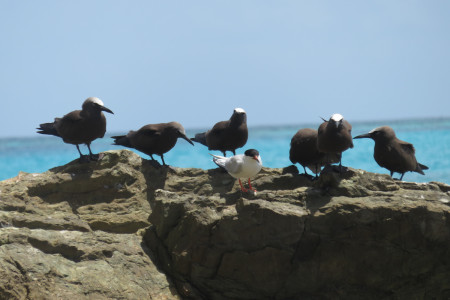
Seabirds are a common sight when you live by or work on the ocean—especially in the tiny remote islands that stretch between the “mainlands” of St. Vincent and Grenada. But residents of the transboundary Grenadines have the opportunity to gain a much deeper appreciation of these magnificent birds, particularly if they make their living from the sea. Similar to seabirds, citizens of the Grenadines practice livelihoods that are inextricably and ultimately reliant upon the marine environment. Although they live on the land, they look towards the ocean for sustenance and stability. Until recently, outsiders did not know much about seabirds on these islands, however local fishermen and naturalists knew and valued them for their beauty, fish-finding skills, ability to foretell weather events, and their eggs and meat. In recent years they noticed that many were in decline.
In 2004, scientists Hayes, Frost, Sutton, and Hay visited the Grenadines and discovered high numbers of boobies and terns, but with respect to numbers of breeding seabirds there was little other existing research. They summarized their results in a chapter in An Inventory of Breeding Seabirds in the Caribbean in 2009. Soon after, this work was followed up through the collaboration of adventurers David and Katherine Lowrie and Environmental Protection in the Caribbean (EPIC) who set out to catalog seabird colonies throughout the Lesser Antilles in the first standardized surveys of the region. These surveys resulted in the Seabird Breeding Atlas of the Lesser Antilles, which featured firsthand visits to all the colonies and numerous newly identified sites. These surveys showed that two of the Grenadine islands—Battowia and Petit Canouan—supported globally important seabird colonies but were relatively unprotected, with birds being heavily exploited for food. Furthermore, dozens of other islands had active colonies but local residents were becoming alarmed by decreases in recent years. We accepted the challenge this presented and sought to engage local communities to learn more about how seabirds are used for food and fishing. Simultaneously we built a locally relevant and practical conservation presence in an effort to restore and protect populations.

In 2014, EPIC teamed up with SCIENCE (Science Initiative for Environmental Conservation and Education) and began to build a volunteer patrol team to monitor islands in the Grenadines with funds from the Protect Baby Seabirds Campaign on GlobalGiving and a Global Environment Facility (GEF) grant, slated to increase biodiversity education and capacity in St. Vincent’s Grenadines. The first workshop took place in 2015 in Paget Farm, Bequia with participants from Bequia, Mustique, Mayreau and Union Island.
This year’s workshop took place from July 22–23rd in Clifton, Union Island, with volunteers primarily from the Southern and Grenada Grenadines, including Mayreau, Union, and Carriacou (plus one participant from Mustique). This team recognized the importance of addressing the entire Grenadines from a transboundary conservation approach, since historically, culturally, and ecologically, the transboundary Grenadines are more closely related to one another than to their respective mainlands. Therefore, it was considered more valuable to work across the entire Grenadines archipelago than to use arbitrary political boundaries to define the extent of the project area (not to mention that seabirds do not care about political boundaries). With representatives from the Grenada Grenadines in attendance this year, we can now consider this initiative to be truly transboundary!
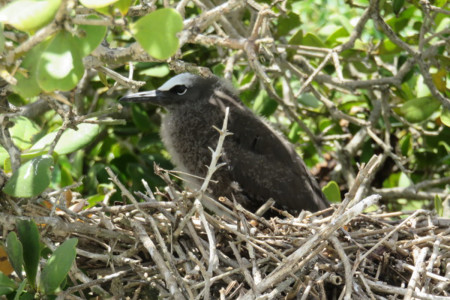
The workshop included a day of presentations on seabirds and their identification, as well as a field trip for participants to learn how to collect data on breeding sites. Most of those involved were beginners with little formal training in bird identification, so the first day was devoted to teaching participants how to distinguish between the many species of seabirds that occur in the Grenadines. We discussed basic seabird biology and threats, answering questions such as: Why are seabirds doing so poorly in comparison to other bird species? What is being done to promote and protect seabirds? What kind of management activities can we implement? How is this type of citizen science data collection useful? And, most importantly, how can concerned residents within the Grenadines contribute to the conservation and management of their diminishing seabird resources?
Participants also learned how seabirds have been integral to Grenadines’ cultural heritage for many centuries, providing additional conservation rationale rooted in a cultural context. The Birds of the Transboundary Grenadines team was able to pass around a draft copy of its Grenadines bird identification guide, containing local knowledge and folklore collected between 2012–16 from residents throughout the archipelago. The first day ended with attendees taking part in an identification quiz, defining their favorite seabird, and signing a voluntary pledge to establish their commitment to the program. Many people admired the Magnificent Frigatebird for its astounding flight abilities, and the Brown Pelican was a favorite for its diving expertise.
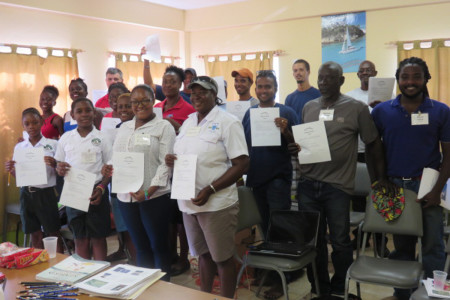
The course instructors included: Dr. Will Mackin, seabird biologist, co-chair of the Seabird Working Group of BirdsCaribbean and board member of EPIC; Lystra Culzac, founder of the St. Vincent-based NGO SCIENCE; Aly DeGraff, a cartographer for National Geographic and BirdsCaribbean, and partner on the Birds of the Transboundary Grenadines project with over five years’ experience in the Grenadines; Juliana Coffey, a seabird biologist with extensive field research and community outreach experience in the Grenadines and the founder and local knowledge expert behind the Birds of the Transboundary Grenadines project; and Wayne Smart, a Master’s Degree student at Arkansas State University who studies breeding biology of seabirds on the southernmost islands of the Grenada Grenadines.
The attendees included staff from the Sustainable Grenadines NGO and two youth members who represented their Junior Ranger program; employees of the Tobago Cays Marine Park; and local fishermen, entrepreneurs, tour guides, teachers, divers, and naturalists. We took a field trip on the second day to the Tobago Cays Marine Park. Here, we conducted sea-based surveys aboard the traditional working schooner Scaramouche around Jamesby, Petit Bateau, and Petit Rameau, and a land-based survey on Baradal to practice newly acquired field and identification skills. Participants identified Brown Boobies, Brown Noddies, Laughing Gulls, Brown Pelicans, and Bridled and Roseate Terns from the boat, and visited a nesting Brown Noddy colony on Baradal. It was a very rewarding moment when one of the most knowledgeable and experienced fishermen in the Grenadines declared in awe, “I didn’t know the birds was nesting here like this!”
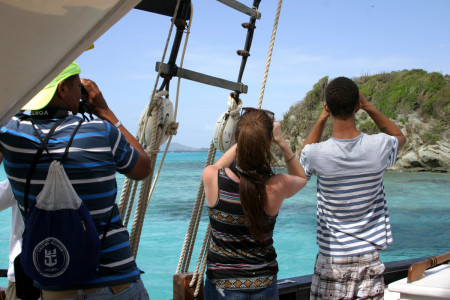
After the field trip, the team practiced using data entry forms to enter results from the surveys into the West Indian Breeding Seabird Atlas that keeps records of breeding seabirds in the Caribbean. Post-workshop evaluations indicated the participants enjoyed the discussion-based format of the training and found the identification section very helpful. They left feeling energized and excited about putting their new skills into practice to help protect seabirds. In typical Caribbean fashion, we spotted one of the workshop participants standing by the water sipping a rum punch and scanning the sea with his binoculars. As he practiced his newfound seabird identification skills, he proudly exclaimed, “I got a new hobby now!”
Encouraging participants to explore their islands has enabled them to observe seabird interactions with other wildlife species and gain a greater appreciation for the natural history of their islands. One participant observed Royal Tern activity over a particular area of a beach and, when he went to investigate, he discovered their focus had been on turtle hatchlings making their first trek to the sea!
We plan to meet again in 2017, where participants from the previous two workshops will meet to discuss their observations from the 2017 breeding season and learn more survey methods. The team stays in contact through WhatsApp and Facebook groups, where they can ask questions and report sightings. Data are submitted through a standardized format, and surveyors are reimbursed for their fuel costs. With sufficient funding, EPIC would like to make these workshops an annual event, building a broader coalition of patrol members throughout the region.
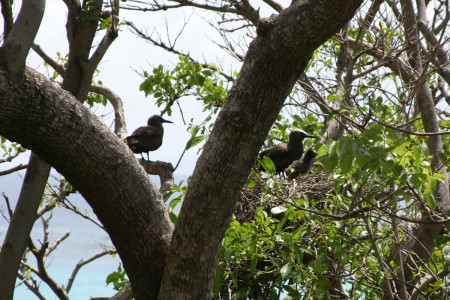
Juliana Coffey notes, “We have been working with some of these fishermen for over five years through a shared concern for the welfare of seabirds in the Grenadines, and their continued participation in the ‘Birds of the Transboundary Grenadines’ project. We have been carefully documenting their detailed knowledge and folklore as it pertains to birds, accompanying them on field trips to offshore islands and providing them with informal support for the questions they have had. It is wonderful to finally be able to offer a more formalized training within a network of concerned individuals, so that they can realistically contribute to the fate of seabirds in the Grenadines, made possible through EPIC and SCIENCE.”
Already, the Grenadines Seabird Team has documented several threats including rats, mice, discarded fishing gear, goats and invasive grass. Some areas, such as the Sooty Tern colony at the Petit Canouan Important Bird Area, may need vegetation management; years of burning to facilitate egg collection have altered the plant composition to just a few species. We will need to carefully craft a solution with our partners to make sure the seabirds at Petit Canouan can continue to thrive. There are many opportunities for the team to initiate restoration projects to increase and enrich wildlife populations around this magnificent archipelago. We also want to provide the Grenadines Seabird Team with the necessary support, guidance and resources to allow for accurate data collection and reporting, including access to expert advice, digital cameras, and identification guides.
Equipped with their newly acquired skills and enhanced knowledge, the Grenadines Seabird Team members are now effective advocates for seabirds in their respective communities. This program offers hope for seabirds and concerned citizens in the region, and can serve as a model for other areas facing similar challenges. To support this project, please consider donating to our ongoing Protect Baby Seabirds Campaign!
by Will Mackin, Alison DeGraff, Juliana Coffey, and Natalia Collier

One comment
Comments are closed.